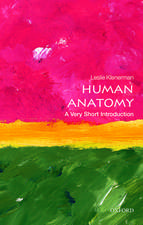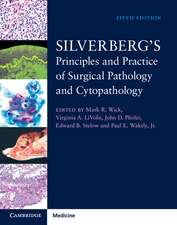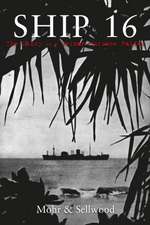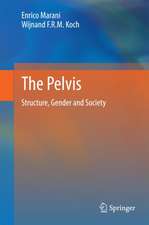Inhalation Toxicology: The Design and Interpretation of Inhalation Studies and Their Use in Risk Assessment: Ilsi Monographs
Donald L. Dungworth Editat de Ulrich Mohr Georg Kimmerle, James Lewkowski, Roger O. McClellan, Werner Stöberen Limba Engleză Paperback – 23 sep 2011
Preț: 718.29 lei
Preț vechi: 756.09 lei
-5% Nou
Puncte Express: 1077
Preț estimativ în valută:
137.44€ • 144.27$ • 114.08£
137.44€ • 144.27$ • 114.08£
Carte tipărită la comandă
Livrare economică 11-25 aprilie
Preluare comenzi: 021 569.72.76
Specificații
ISBN-13: 9783642648069
ISBN-10: 3642648061
Pagini: 344
Ilustrații: XIII, 318 p.
Dimensiuni: 155 x 235 x 18 mm
Greutate: 0.48 kg
Ediția:Softcover reprint of the original 1st ed. 1988
Editura: Springer Berlin, Heidelberg
Colecția Springer
Seria Ilsi Monographs
Locul publicării:Berlin, Heidelberg, Germany
ISBN-10: 3642648061
Pagini: 344
Ilustrații: XIII, 318 p.
Dimensiuni: 155 x 235 x 18 mm
Greutate: 0.48 kg
Ediția:Softcover reprint of the original 1st ed. 1988
Editura: Springer Berlin, Heidelberg
Colecția Springer
Seria Ilsi Monographs
Locul publicării:Berlin, Heidelberg, Germany
Public țintă
ResearchCuprins
I. Approaches to Assessing the Toxicity of Airborne Toxicants.- 1. Standard-Setting as an Integrative Exercise: Alchemy, Juggling, or Science?.- 2. Species Differences in Inhalation Toxicology: Variations in Exposure-Dose Relationships and Macrophage Function.- 3. Cell Populations of the Respiratory System: Interspecies Diversity in Composition, Distribution, and Morphology.- 4. Comparative Metabolic Basis for the Disposition and Toxic Effects of Inhaled Materials.- II. Methodological Issues in Designing and Conducting Studies with Laboratory Animals.- 5. Exposure Facilities and Aerosol Generation and Characterization for Inhalation Experiments.- 6. Different Methods Used in Acute and Subchronic Inhalation Studies of Potential Lung Irritants, with Particular Attention to Lung Function Measurements.- 7. Chronic Inhalation Toxicity Studies: Protocols and Pitfalls.- 8. Carcinogenicity Protocols.- III. Interpretation of Toxicokinetic Studies with Airborne Toxicants.- 9. Interspecies Dosimetry of Reactive Gases.- 10. Behavior of Inspired Aerosol Boli in Humans.- 11. Respiratory Tract Clearance of Particles and Substances Dissociated from Particles.- IV. Interpretation of Results Using Laboratory Animals.- 12. Interpretation of Early Lesions in the Mouse Lung: Fibrogenesis and Tbmorigenesis.- 13. Relevance to Humans of Experimentally Induced Pulmonary Tumors in Rats and Hamsters.- 14. Experimentally Induced Emphysema and Long-Term Nitrogen Dioxide Inhalation.- 15. Comparison of Respiratory Function Responses of Laboratory Animals and Humans.- V. Risk Assessment of Airborne Toxicants.- 16. Population Studies in Risk Assessment: Strengths and Weaknesses.- 17. Human Clinical Exposure Studies: Body Box or Pandora’s Box?.- 18. Occupational Exposure Standards in Europe: History,Present Status, and Future Trends.- 19. Current Approaches for Determining Workplace Exposure Limits in the USA.
















